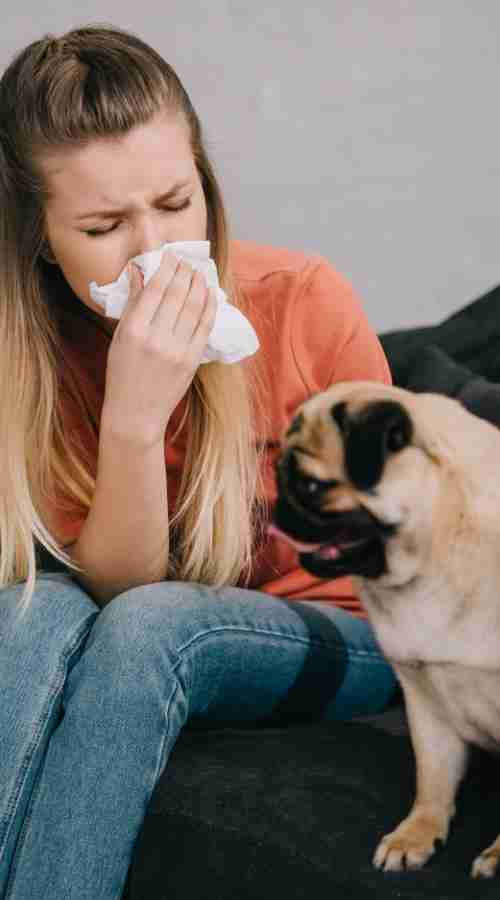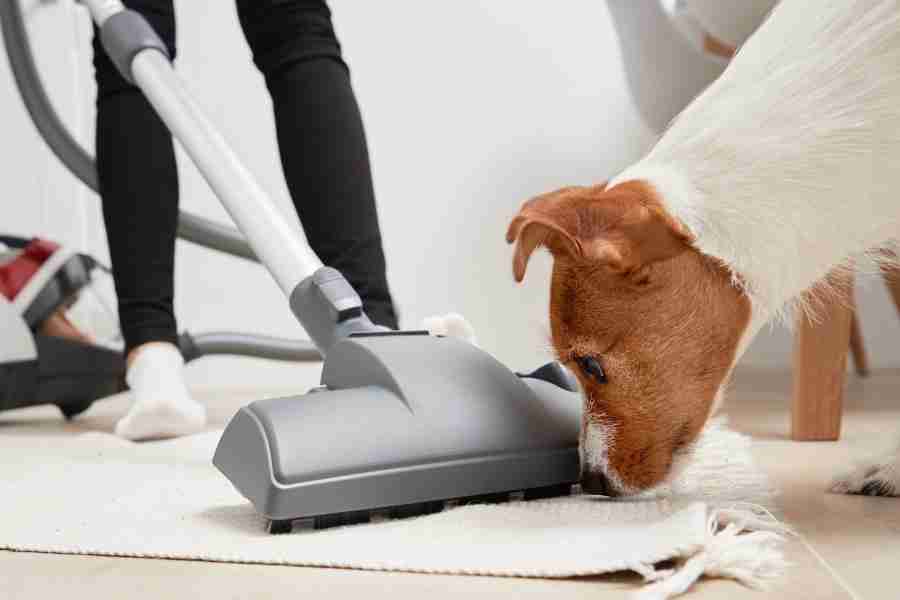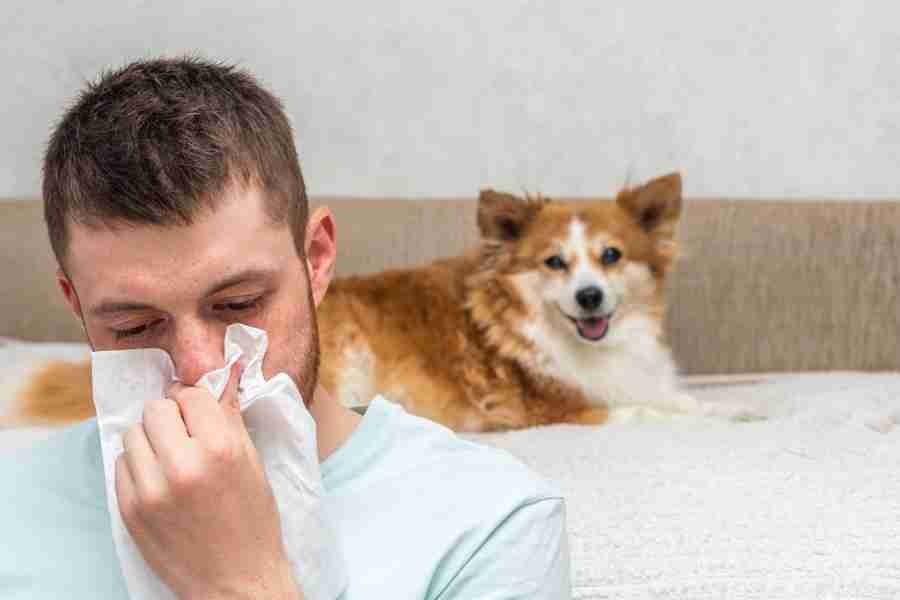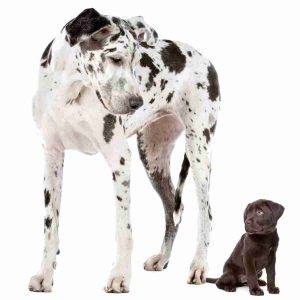A Hypoallergenic dog breed is a dog breed (or crossbreed) that is considered to be better for allergic persons than other breeds.
Allergens (the stuff that makes people with allergies suffer) are proteins that are found in a dog’s saliva (drool) and dander. Different dog breeds produce dander in different amounts, so some dog breeds are easier for people with allergies to handle.
There are many things that make one breed more hypo-allergenic than another:
Allergen Production
Some breeds simply produce more of the protein responsible for allergic reactions than others. Additionally, some individual dogs produce more or less than others.
By choosing a breed that is considered to have reduced production of this protein in their saliva and dander, you can greatly improve your chances of the dog – and your allergies – living in harmony.
Shedding or Non-Shedding Dog Breeds
 Dog Breeds that do not shed, or shed less are more likely to be hypo-allergenic. This is because the dog’s dander and saliva stay on the hair that is attached to the dog’s body, and don’t become airborne particles that can aggravate allergies.
Dog Breeds that do not shed, or shed less are more likely to be hypo-allergenic. This is because the dog’s dander and saliva stay on the hair that is attached to the dog’s body, and don’t become airborne particles that can aggravate allergies.
A dog that produces less of the protein that causes allergic reactions in it’s saliva and dander – AND – is non-shedding or low shedding, can usually be considered a very good choice for allergy sufferers.
So protein production in the saliva is a very important factor in whether a specific dog breed (or dog) will be a good choice for an allergy sufferer. A non- shedding or lightly shedding dog can be a better choice if you value the ability to breathe.
Regular Grooming
Brushing, bathing and grooming a dog on a regular basis can make a huge difference to allergy sufferers – even with breeds that are not generally considered to be hypoallergenic. It’s not so much the dog that folks are allergic to, but rather what the dog adds to the environment; allergens attached to hair and dander.
By keeping loose hair and dander to a bare minimum, many allergy sufferers find that owning a dog causes little, if any, allergy symptoms. That being said, even the most “hypo-allergenic” dog breed can cause allergies to flare up in a sensitive person if left un-bathed and un-groomed for long stretches.
 Size Matters
Size Matters
It is thought that the smaller the dog, the less potential for problems. This is based on the idea that the smaller the body surface area of the dog, the smaller the amount of dander, hair and saliva the dog will produce.
This is why many of the small hypoallergenic dog breeds, such as the Toy Poodle, Bichon Frise, Havanese, Shih Tzu and Italian Greyhound are such a great choice for allergy sufferers.
Barking Bowsers Need Not Apply!
Dogs that like to do a lot of barking are not only highly annoying to those around them, but can be more of a problem for allergy sufferers. Why, you ask? Barky dogs are constantly spewing microscopic bits of saliva into the air.
These droplets can contain a good amount of the protein that causes allergies to flare up, a dog can distribute this allergen throughout the house in one good morning of yappiness. If you’re an allergy sufferer, it’s best to steer clear of yappy dogs in favor of dogs with more calm disposition.
Other Measures You Can Take To Reduce Dog Allergens in Your Home

Fastidious housekeeping is the cornerstone of an allergy-free home environment, and this is an absolute MUST if you want to own a dog. Even the most hypo-allergenic dog breed will produce some allergens, and if these are left to sit and multiply on floors, carpets, bedding, furniture, windows and other places in the home, you’ll soon find your home to be less that a haven.
Here are some important chores that should be performed a few times a week to help ensure the harmonious co-existence of allergy-sufferer and dog:
- Bathe the dog! Try to give your dog a bath (or at least a good wipe-down with a wet towel) twice a week. (More often can cause problems for your dog, since the coat has natural oils that protect the skin and coat).
- Vacuum frequently! Get yourself a really good vacuum that does both bare floors and carpets, and which has an on-board HEPA filter. Try to make vacuuming part of your daily routine, or at least vacuum 3 times a week. Not only is vacuuming an excellent, calorie burning, workout, but it can make a real difference to people with allergies.
- Get an air filter. A good quality, effective HEPA air filter will help keep airborne particles and allergens to a minimum. This is one purchase that you won’t regret, helping make your home a place where allergies are almost non-existent.
- Take your shoes off at the door. Don’t keep your outdoor shoes on in the house, and don’t let your visitors do so either. Outdoor footwear can track a myriad of environmental pollutants, dust and allergens into your home, making your dog allergies the least of your concerns. Be vigilant about what you allow to enter your house, and vacuum up anything that sneaks past on a regular basis.
- Wipe down dog feet at the door. It’s inevitable that you’ll want to take your dog for regular walks, and your dog will also need access to the yard to play and do it’s business. Make a habit of wiping down your dog’s paws and legs when they come back in the house to keep dust, dog allergens and other pollutants to a minimum.
Finally, allergy problems vary greatly in severity. While dog ownership can provide a wonderful boost to your health, happiness, longevity and well-being, a severe asthma attack can kill you in an instant. Be sure to check with your doctor or allergist to make sure that they are in agreement with your desire and decision to add a dog or puppy to your home – even a hypoallergenic dog or puppy.


 Size Matters
Size Matters